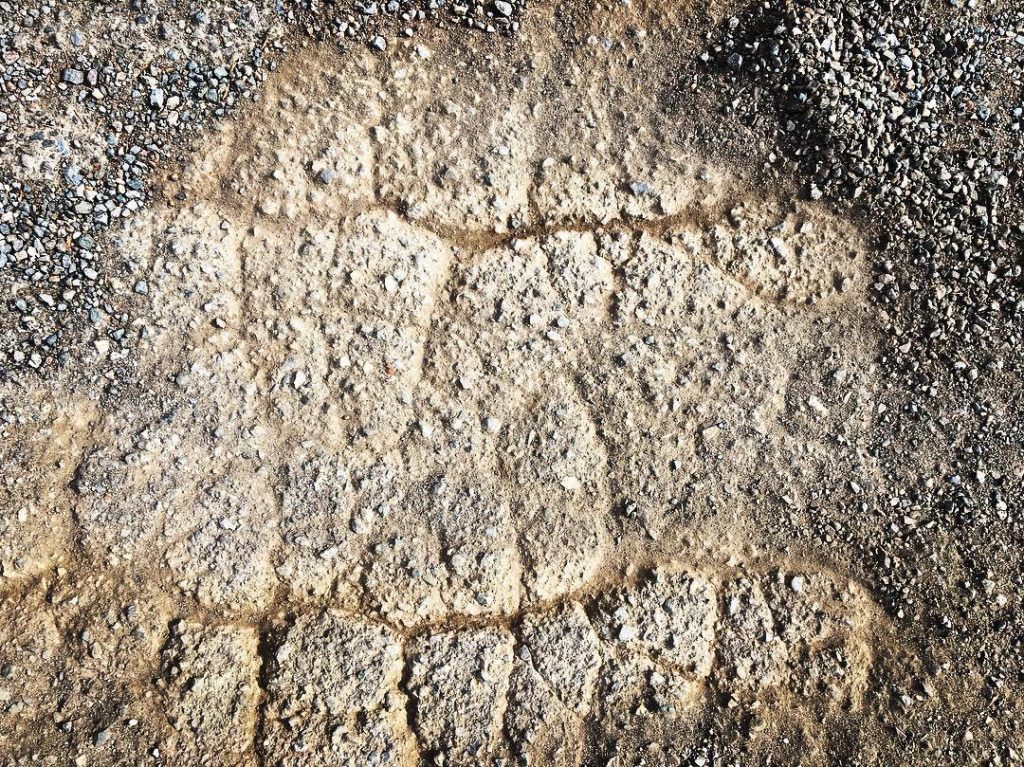
Editor’s note: The following is not whining.
Now that that’s been established, a brief tale about our short street in North Berkeley. We moved to the street several presidential administrations ago — during the tenure of the Republican before the Republican before the Democrat before the Republican before the Democrat before the current “Republican.”
“Nearly three decades ago” would also put you in the right historical neighborhood.
The street was paved within three or four years of our arrival. Not a big deal. The pavement hadn’t seemed terrible. But new, smooth asphalt seemed like a luxury.
That’s the last time the street was paved, and over the past 10 years or so, it became apparent the asphalt was breaking down. There’s lots of gravel on the paved surface. The rocks still embedded in the asphalt seem exceptionally sharp; if you happened to fall while cycling or running down the street, you’d be cut to ribbons. And much of what’s left of the pavement is eroded into little rills and gullies. If you sweep away a patch of gravel and look at it in the right light, it’s kind of beautiful.
Naturally, some of us on the street have told the city of Berkeley we’d be interested in seeing the street repaved. Year after year, the street hasn’t made it onto city’s list of upcoming paving projects. This past spring we sent a brief petition into our councilmember, the mayor and the Public Works Commission asking for the street to get attention. Last week, public works presented its list of streets to be repaved over the next five years, and we weren’t on it.
We’re not sure what, if any, recourse we have, except maybe to make more noise. In the meantime, I sent a letter to the chair of the Public Works Commission. That note (first) and her reply, are below:
Me:
I offer the following with the knowledge there are much bigger issues in the world than patches of local asphalt and with a determination not to get my blood pressure up or give anyone else too much grief over something as transient in the cosmic scheme as pavement.
If I’m reading the agenda item from last night’s council meeting correctly, Holly Street has not even made it onto the 2018-2022 street rehabilitation plan. (Question 1: Am I reading that correctly?)
I assume this is at least partly due to Holly being a non-arterial/non-collector street and thus lower priority — though I note that residential streets are getting “priority” in fiscal 2018 and also that plenty of similar residential streets in no worse condition than Holly have been repaved in the recent past or are now scheduled for repaving. Having skimmed the presentations for last night’s council meeting, I also know that funding is an ongoing challenge (for paving and every other kind of infrastructure).
Question 2: Do we have any recourse to the plan adopted last night? I mean, besides complaining to a council member who’s hearing the same kind of thing from all quarters and doesn’t seem to have much power to get our street on the list?
I think I’m at the point where I’ll suggest to neighbors that we start planting stuff in the street — there seem to be plenty of receptive areas in the remaining pavement for wildflower seeds, native grasses, etc. — and let nature really take its course. Maybe the city can adopt us as a street reclamation pilot project.
From PWC chair:
You are correct the Holly Street is not currently in any of the staff plans for repaving. On the plus side, at the end of a very long meeting last night, Council approved only the first two years of the staff proposed plan, so there is room discussion on the 2020-2022 plan years.
Your street is now in the horrific position of being too broken to maintain. Having said that, we made some incremental progress in the implementation of policy on 15% of funding available for discretionary projects. The PWC continues to recommend that once streets fail and require reconstruction, that is a good time to look at alternative technologies. As you have already expressed your neighbors’ support for green infrastructure, Holly St may be a good candidate for a demonstration project.
As the mandate to the PWC directs us to address the Paving Plan’s compliance with policy rather than specific streets, I think we should work with Linda Maio to discuss how to raise specific street concerns and find a fair and equitable way for us as citizens to 1) know the status, quality ranking of streets we are concerned about as individuals, 2) understand our individual priority streets in the context of a citywide perspective of work needed and limited available funds, and 3) develop a transparent forum that provides an avenue for citizen input to the street rehabilitation plan.
The PWC will be working to provide policy recommendations to the Council over the coming few months and I will keep you posted on our progress, looking forward to your input and suggestions. Thank you for your concern, communication, and delightful technical recommendation.
I look forward to talking in the coming months.
